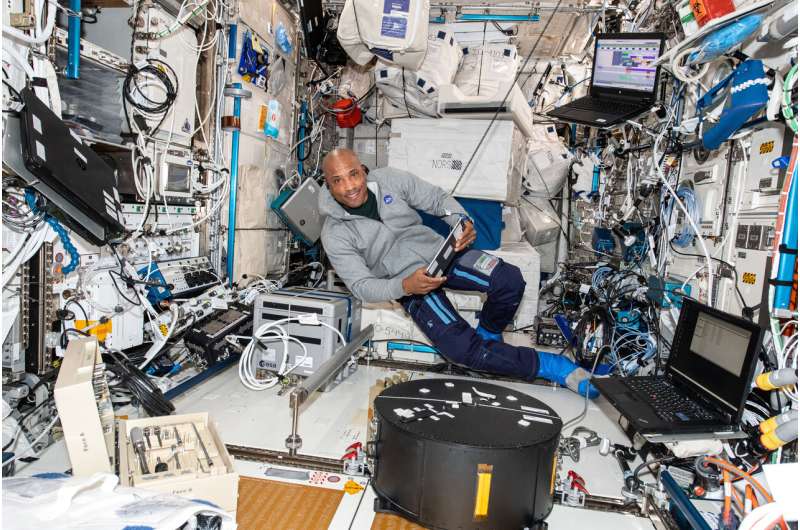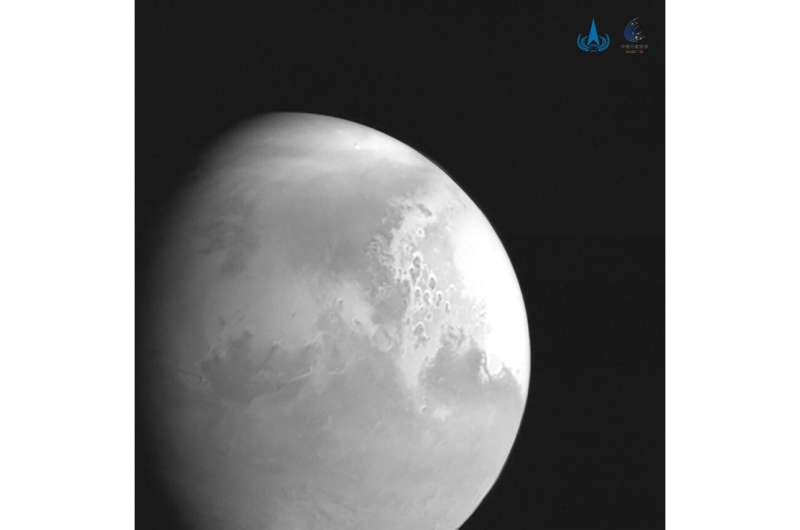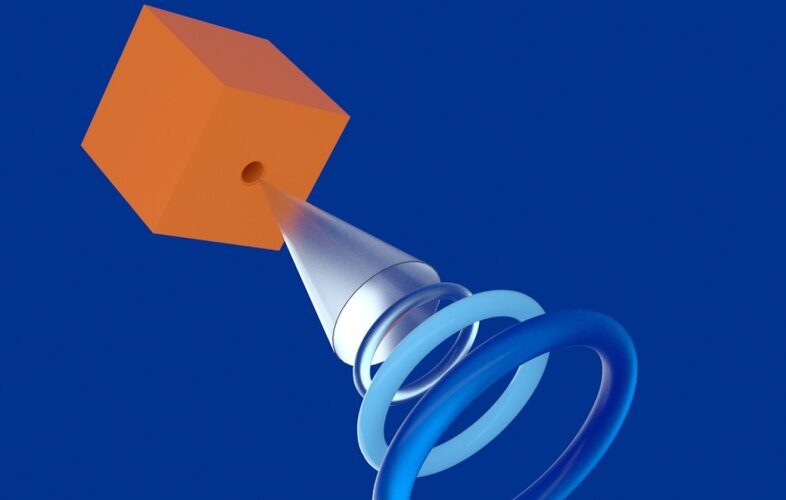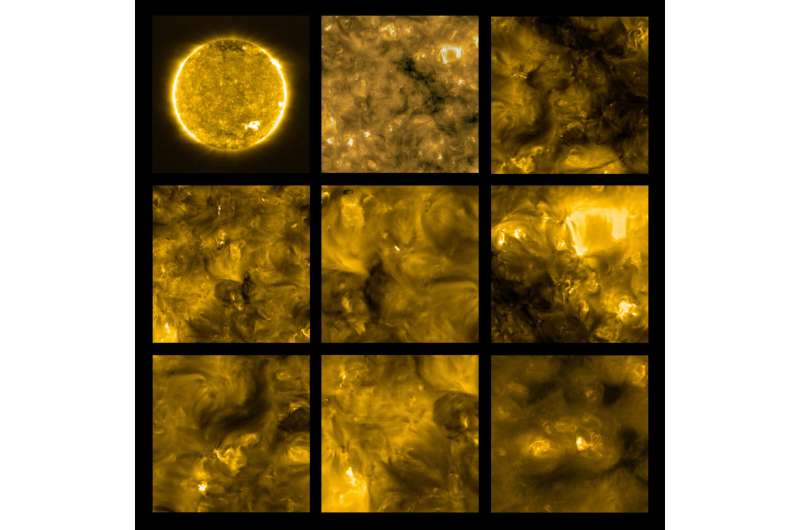
Copernical Team
Keeping it fluid: Probing how fluids behave in weightlessness

NASA astronaut Victor Glover installs the Fluid Dynamics in Space experiment, or Fluidics for short. Fluidics is the black cylinder pictured in the foreground of the European Columbus module of the International Space Station.
Developed by French space agency CNES and co-funded by Airbus, the Fluidics experiment is probing how fluids behave in weightlessness.
The experiment is made up of six small, transparent spheres housed in the black centrifuge seen here and is studying two phenomena.
The first is 'sloshing' or how liquids move inside closed spaces, which is hard to predict both with and without gravity. Think how frustrating it can be to get the last drop out of a packet of orange juice, then imagine the challenge for engineers designing satellites to use every drop of fuel in weightlessness, or designing rockets with fuel tanks that must deliver fuel to the engines under extreme loads. Insights can help industry design better satellite fuel-systems to increase their life and make them less expensive.
A second part of the experiment looks at wave turbulence in liquids. On Earth, gravity and surface tension influence how energy dissipates in waves or ripples.
Chinese spacecraft enters Mars' orbit, joining Arab ship

Meet ESA’s R&D department

Our new brochure introduces ESA’s R&D department: the engineers charged with inventing the new technologies needed for Europe to push further out into space, and develop the novel services improving our lives here on Earth.
ESA's Solar Orbiter ducks behind the sun

Name: Solar Orbiter, or "Solo' as the mission control team fondly call it, is one of the European Space Agency's pluckiest missions and is now cruising toward the sun.
Age: One year old! We launched on 10 February 2020. Granted, it was first powered up on Earth at some point during construction, but launch is 'when it came alive."
What's it doing out there? It's imaging our star, observing the solar wind and unraveling mysteries of the solar cycle. It's already returned some of the best images of ol'Sol ever, revealing omnipresent miniature solar flares, dubbed 'campfires," near the surface.
Anything else? Well, it uses prehistoric cave pigment as a coating to withstand temperatures up to 520°C. The sun's pretty darn hot, you know.
So, what's happening now? The spacecraft's orbit is taking it behind the sun, and starting a few days ago the apparent angle, as seen from Earth, between Solar Orbiter and the sun started falling below 5 degrees.
Russian cosmonauts to test new shielding material for radiation protection
 An award-winning composite material that has proven effective against radiation in nuclear submarines will be sent to the orbital outpost for further testing this year, the Russian space agency said on Monday.
"Space is known for its elevated radiation levels... The invention has already been tested in nuclear subs. If the space experiment proves to be equally successful the material will
An award-winning composite material that has proven effective against radiation in nuclear submarines will be sent to the orbital outpost for further testing this year, the Russian space agency said on Monday.
"Space is known for its elevated radiation levels... The invention has already been tested in nuclear subs. If the space experiment proves to be equally successful the material will China tests its missile interception equipment
 China conducted a land-based, midcourse missile interception test on Thursday-the fifth land-based, anti-ballistic missile test the country has publicly announced.
The Defense Ministry said in a brief statement late on Thursday that the test had achieved its goals, and the operation was defensive in nature, not targeting any other country.
Before the latest operation, China had succe
China conducted a land-based, midcourse missile interception test on Thursday-the fifth land-based, anti-ballistic missile test the country has publicly announced.
The Defense Ministry said in a brief statement late on Thursday that the test had achieved its goals, and the operation was defensive in nature, not targeting any other country.
Before the latest operation, China had succe DARPA pursues plan for robust manufacturing in space
 As commercial space companies increase the cadence of successful rocket launches, access to space is becoming more routine for both government and commercial interests. But even with regular launches, modern rockets impose mass and volume limits on the payloads they deliver to orbit. This size constraint hinders developing and deploying large-scale, dynamic space systems that can adapt to change
As commercial space companies increase the cadence of successful rocket launches, access to space is becoming more routine for both government and commercial interests. But even with regular launches, modern rockets impose mass and volume limits on the payloads they deliver to orbit. This size constraint hinders developing and deploying large-scale, dynamic space systems that can adapt to change NATO picks France's Toulouse for new military space 'Center of Excellence'
 While the North Atlantic Treaty Organization (NATO) has disavowed an interest in militarizing space, several members of the alliance, including the US, UK, and France, have oriented themselves toward conflict in the space domain in recent years.
The North Atlantic alliance has selected the French city of Toulouse to host its new higher education center for military space affairs.
NAT
While the North Atlantic Treaty Organization (NATO) has disavowed an interest in militarizing space, several members of the alliance, including the US, UK, and France, have oriented themselves toward conflict in the space domain in recent years.
The North Atlantic alliance has selected the French city of Toulouse to host its new higher education center for military space affairs.
NAT Study of supergiant star Betelgeuse unveils the cause of its pulsations
 Betelgeuse is normally one of the brightest, most recognizable stars of the winter sky, marking the left shoulder of the constellation Orion. But lately, it has been behaving strangely: an unprecedentedly large drop in its brightness has been observed in early 2020 (Figure 1), which has prompted speculation that Betelgeuse may be about to explode.
To find out more, an international team of
Betelgeuse is normally one of the brightest, most recognizable stars of the winter sky, marking the left shoulder of the constellation Orion. But lately, it has been behaving strangely: an unprecedentedly large drop in its brightness has been observed in early 2020 (Figure 1), which has prompted speculation that Betelgeuse may be about to explode.
To find out more, an international team of Rare blast's remains discovered in Milky Way's center
 Astronomers may have found our galaxy's first example of an unusual kind of stellar explosion. This discovery, made with NASA's Chandra X-ray Observatory, adds to the understanding of how some stars shatter and seed the universe with elements critical for life on Earth.
This intriguing object, located near the center of the Milky Way, is a supernova remnant called Sagittarius A East, or Sg
Astronomers may have found our galaxy's first example of an unusual kind of stellar explosion. This discovery, made with NASA's Chandra X-ray Observatory, adds to the understanding of how some stars shatter and seed the universe with elements critical for life on Earth.
This intriguing object, located near the center of the Milky Way, is a supernova remnant called Sagittarius A East, or Sg 